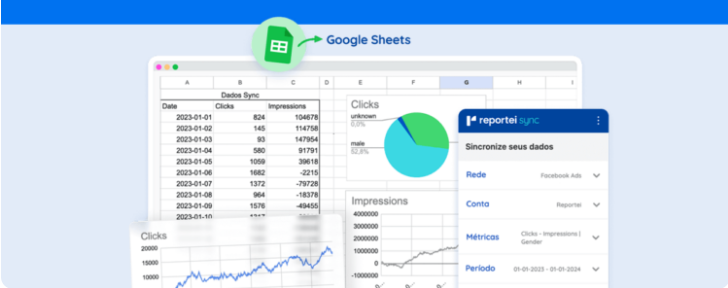Over the last 15 years, I’ve worked with social media reports and made plenty of mistakes. I started in an agency, and today I am a co-founder at Reportei (which, by the way, we developed to solve the problem we had with generating reports for the agency). Throughout this period, a lot has changed: Facebook rose to prominence, Orkut disappeared, Twitter stopped yielding results as before. But one thing never changed: every month, I create social media reports for clients.
From what I’ve counted, it’s been over 100 companies from all sectors and types: I’ve presented reports to business owners, marketing teams, administrators, and even to clients’ finance/accounting teams.
I’ve selected mistakes that I’ve made, which served as learning opportunities to improve processes. It would be great to hear your comments if you’ve experienced this or have other points to add. Let’s look at the issues I encountered:
The client can (and will) understand metrics differently from you
One mistake that took me years, honestly, to learn was: I assumed the client understood my explanations of what each metric represented. In other words, I assumed the client understood the metrics as I did.
For example: reach is a metric I value because it’s a real indicator of how many people were impacted by the content. Even if not everyone sees the content, it’s a metric that shows more than “followers,” for example.
But, just listen. Not long ago, one of these clients commented that he thought ALL followers received ALL the posts on his Facebook page. He believed that being a follower implied receiving the posts. He confused reach with follower – something that for those of us in the field is so basic, but wasn’t for the client (normal, after all, he’s not specialized in this).
A clear mistake on my part, for not knowing how to explain this well from the beginning of the project – I only realized the client thought this way after serving him for a year. And what’s stranger is that this is a client to whom we presented the report every month, point by point, with long 40, 50-minute meetings (by the way, I do not recommend this haha)
You might say: ah but this would never happen to me, I’m incredible, I know everything about ROI, ROAS, and the like (haha). Believe me, sooner or later, some metric will mean one thing to you and something else to your client.
My suggestion is simple: in the first report presentation or if you’re sending it by email, ask the clients to share what they understood from the social media reports and try to explain a few points that are confusing for “laypeople” like reach, engagement, organic vs paid.
We made an e-book about Metrics and Indicators for Digital Agencies. If interested, access it here.
Metrics that don’t matter to your client
I would say that 90% of the clients I’ve worked with had no idea about the type of metric that really mattered for their business. Yes, practically all of them want sales as a measure of success, but the indicators we can get from social networks and websites are a mystery to most clients.
The lead, the sale, the contact are essential and should be the main objective of most projects – because that’s what brings money to the client and keeps him happy. However, if we only analyze these numbers, we might not understand the reason behind a sale (or lack thereof). We need more indicators – even more so when we talk about social media.
As you probably know, it’s practically impossible to sell before engaging on social media. Hence, we need real engagement indicators to understand that we’re on the path to sales. The engagement megaphone and the sales funnel are there to show us how it works.
Social Media Reports Style Deception: we pretend to report, and the client pretends to read
I learned that the phrase from the five-time champion Vampeta also applies to digital marketing: “Flamengo pretends to pay me, and I pretend to play.” You know that report that you’re sure the client won’t read? And, because of that, you just put in data for the sake of it? Or, WORSE, you remove from the social media reports data that compromises your work and hope the client doesn’t ask.
The problem is: the report becomes just a “checkpoint” in the relationship with the client. It ceases to be a tool for continuous improvement and becomes an obligation of the company-client relationship. And the case is even more serious when the analyst doesn’t want to show negative data – real (negative, sometimes) data makes the relationship more transparent, and the client can trust you more (if you show that you can overcome the red numbers).
A tip to start: make sure the client has read the report and understood at least one point. Send the report and ask a question
about what they thought about point X or what they would say regarding result Y. Even if they only read that part, it’s progress. You can also ask questions like: do you miss any information? Is there something in the report that doesn’t interest you?
If clients read, I’m sure, social media reports will have greater significance, and the client-company relationship improves. Even if the indicators are bad. It’s a chance to prove that someone is thinking about how to improve, even in a moment when things aren’t working.



